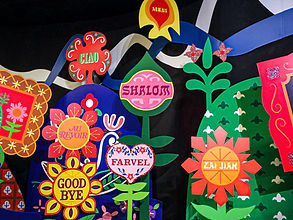
ALL ABOUT
ARTIFICIAL INTELLIGENCE
BUT WHAT EXACTLY IS AI?
Nowadays, artificial intelligence is more and more present. But first you have to understand what it is. To keep it short and simple, an AI is a computer program capable of processing large amounts of data, reasoning, or even discerning patterns undetectable by humans.
An AI can be purely reactive, this is stage 1, in which case it will have no memory, no experience, it will simply be able to perceive the world at a given moment.
In stage 2, the AI will have limited memory, so it will retain information, and will know how to experience the past. In short, a level 2 AI already does a lot of things.
At NOVO SENSO, developing AI that helps people who care for animals, not replace them, that's our mission. To successfully complete this mission, it is important to understand what artificial intelligence is.

Indeed, AI has many facets and image recognition otherwise known as "labeling" is an important phase in the process of learning artificial intelligence.
SO WHAT DOES THIS IMAGE RECOGNITION CONSIST OF?
Labeling represents a set of image detection and analysis methods to enable the automation of a specific task. It is a computer vision technology that is able to identify places, people, objects and many other types of elements within an image and draw conclusions by analyzing them.

Photo or video recognition can be performed to varying degrees of accuracy, depending on the type of information or concept sought. This is because a model or algorithm is capable of detecting a specific element, just as it can simply assign an image to a large category. To enable automation of a specific task, the algorithm has to be trained and this is a huge task. However, building a labeled dataset for learning the algorithm is an essential step in these "computer vision" projects.
If we take the object detection algorithms, training the algorithm from scratch requires millions of images to achieve accurate results, but already trained algorithms can be tuned for a specific task using a comparatively smaller set of images. This process of retraining and fine-tuning an algorithm is called transfer learning.
But even with transfer learning, a considerable amount of human labor is required to get them going. On average, at least 1,500 and 2,000 labeled images are needed to enable this specific task automation. A long and time-consuming mission but nevertheless compulsory for a proper functioning algorithm!
However, image recognition is just one of many tasks of artificial intelligence. This AI term is used to describe any time a computer performs a task that mimics human intelligence. We have seen the identification and location of an object in a video but there are others, it is also possible to:
-
Translating text or speech from a foreign language (natural language processing).
-
Determining if you are getting a healthy amount of sleep and exercise (activity recognition).


As you can see, the world of artificial intelligence is very large and varied, but we hope that with this article you will understand a little better what lies behind the notion of "artificial intelligence".
